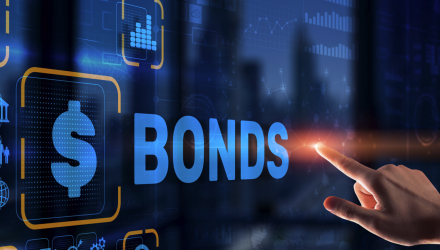Corporate bonds, both investment-grade and high-yield, are delivering solid performances in 2023. But advisors and investors should be mindful of potential headwinds for the junk bond space.
Namely, corporate defaults and bankruptcies are on the rise. This is a scenarios that’s typically are most problematic for high-yield issuers and their bondholders. Said another way, investors looking for corporate bond exposure today may want to consider focusing on quality. That objective can be efficiently accomplished with exchange traded funds such as the Calvert Ultra-Short Investment Grade ETF (CVSB).
CVSB is potentially alluring for fixed income investors in what could become turbulent climate for noninvestment-grade debt. The reasoning is simple. The Calvert ETF mixes U.S. government agency and highly rated corporate bonds with a tilt toward the latter. That implies the fund features diminished credit risk, particularly when measured against traditional junk bond ETFs.
Be Selective With Corporates With Bond ETF CVSB
CVSB’s near-term credibility is enhanced by the fact that the aforementioned headwinds pertaining to high-yield bonds don’t necessarily imply weakness for all corporate debt. In other words, investors should be selective within this asset class. This ETF is an avenue for deploying that selectivity.
“The rise in defaults doesn’t mean investors need to abandon their corporate bond holdings, but it makes sense to take a look at what you own and try to limit your exposure to those bonds where default risk might be highest,” noted Collin Martin of Charles Schwab. “Investment-grade corporate bonds still appear attractive, as their issuers generally have stronger balance sheets than issuers with sub-investment-grade ratings, and they generally have less refinancing risk as well. High-yield bond investments, however, could suffer price declines if defaults do continue to rise.”
The issue of rising defaults is another reason to consider CVSB. This is because when an issuer defaults, the compensation derived by bondholders is typically scant. This essentially ensures those investors suffer losses. That risk is diminished with investment-grade corporate bonds, including those found in CVSB.
“During most defaults, what’s returned to bondholders (known as the “recovery rate”) has historically been well below the bond’s stated par value. According to Moody’s, the average recovery rate for senior unsecured bonds was just 39 cents on the dollar, or 39% of a bond’s par value,” added Martin.
CVSB offers the benefit of active management. This could be a positive trait because the fund’s managers can source attractive credit opportunities while avoiding issuers most at risk of default.
For more news, information, and analysis, visit the Responsible Investing Channel.

